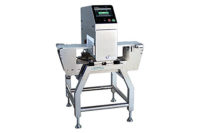Integrating processing and packaging requires the process to be well-specified in terms of design and technical expectations. Global and local standards play an important role and need to be considered for every single piece of equipment purchased.
Specifying every step between processing and packaging requires clear standards that are consistent and robust; this is the case of 3-A Sanitary Standards. These standards support all of the sanitary design concepts that might be required to develop the specifications.
A lot of input needs to be well-defined to succeed on the implementation phase of a hygienic installation.
Select a suitable component design
Components shall be designed in a way that can be cleaned by manual mechanical means without difficulties. They should be easy to inspect and maintain. Situations where dead ends are not properly cleaned result in a major source of contamination. Avoiding crevices and hollow areas that are not hermetically sealed is a must. This requires a clear differentiation between the equipment’s product and non-product contact surfaces.
Consider the finish
To select the proper surface finish, whether the surface will or will not come into contact with the product, it is important to understand the product specifications. You will need to ensure that the surface is cleanable, compatible with the products and chemicals to be used, and coherent with the environment in which the equipment is going to be installed.
Surfaces require a certain level of roughness, an approximately 32-microinch Ra (0.8 µm Ra) finish, and shall be free of areas where contamination could be created. This is why 3-A standards’ general requirements define all of these elements clearly and could be used as a reference for suppliers.
Weigh rubber gasket quality, origin
Rubbers gaskets should not be selected based on cost or logistics, but on specifications instead. Temperature, pressure, surfaces in contact with gaskets, dimensions, tolerances and supplier qualifications are all important considerations in the performance evaluation of the rubber materials. A wrong material selection could lead easily to product contamination. High temperature resistance is also important in helping to prevent the wearing of gaskets, which continues to be a problem.
Implement proper welding practices
The welding process can be looked at in two different ways: the method and the preparation. For the method, it is evident that well-purged welds with a proper gas mixture will lead to precise welding. However, it is critical to select the right material for welding and size correctly:
- The metal inner diameter must align with the inner diameter of the fitting or next tube and the associated weld to be smooth.
- The metal surface and tubing must fit on both the inner diameter and outer diameter for proper weld alignment.
Finally, implementation of a welding inspection program will provide assurance that the work was performed correctly.
Look beyond the obvious
Most dairy factories that implement practices to ensure food safety in design are careful in installing their piping, processing components, electrical cabinets, drains, tanks and other stainless-steel equipment. However, it is easy to overlook other important areas. For example, machine level supports, in most of the cases, have exposed threads and low-quality material that can lead to bacteria growth.
These are just a few examples of the importance of supporting an equipment specification with the proper 3-A Sanitary Standards reference.


